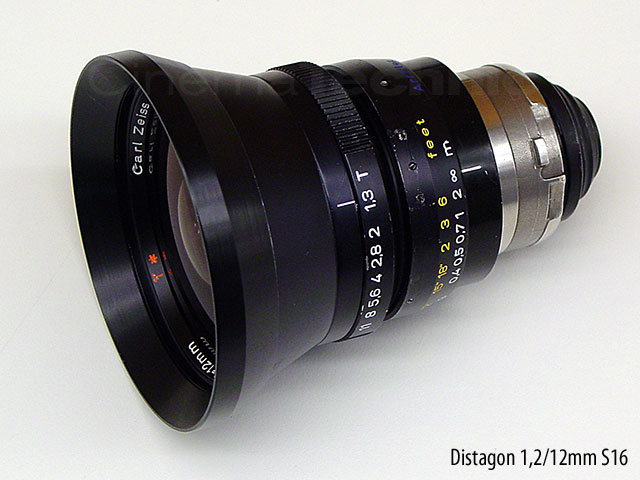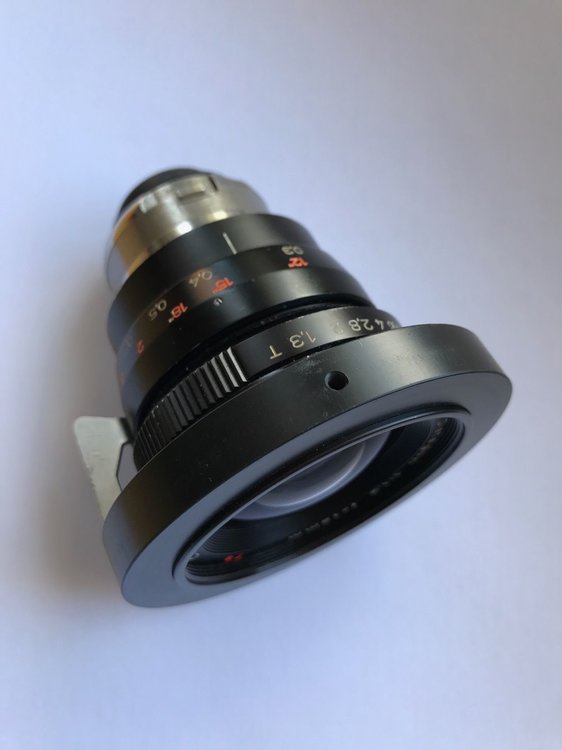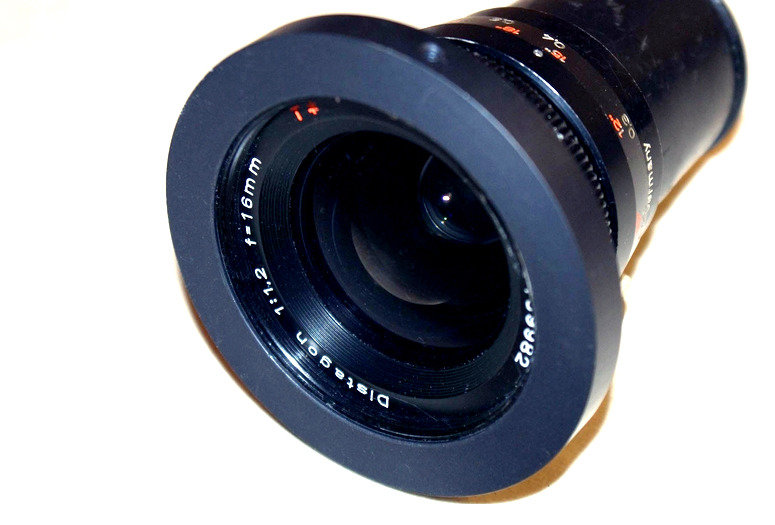
Julian Fletcher
Basic Member-
Posts
52 -
Joined
-
Last visited
Profile Information
-
Occupation
Other
-
Location
London
Recent Profile Visitors
5,794 profile views
-
Bolex Service and S16 Upgrade Recommendations - United Kingdom
Julian Fletcher replied to Robert Meakin's topic in Bolex
I am probably going to put mine on ebay in the next month or so - its a factory made super 16 and will sell it no reserve starting at £1 🙂 -
identical to this Bolex H16 SB & SBM (bolexh16user.net)
-
Hi, I have a Bolex super 16mm SBM camera - it came from the factory as a super 16mm model (it says SUPER 16 SBM on the side). I no longer use it, its in wonderful condition, fully functional. Comes with manual and all the accessories, and in a like new PELI case. I wondered how much this would be worth, considering putting it on ebay. I only have a small switar prime as I used it mainly with Nikon SLR lenses. Apologies if this is in the wrong forum, could do with some help as prices are all over the place. Its indentical to this: Bolex H16 SB & SBM (bolexh16user.net) I bought it brand new about 12-13 years ago from Andrew Alden here in the UK. Thanks everybody, Julian
-
Hi, I am looking for a cost effective service to process and scan family movies I shoot with my Bolex Super 16mm. Anybody had any experience with these guys with their in house processing and their Muller scanner, before I give them a try? Scanning - Gauge Film Cheers Julian
-
Hi All, despite getting some wonderful footage, i'm hanging up my Bolex SBM temporarily and freeing up my freezer of some unused film, all listed on the large auction site. There's 100ft loads of Vision 3 50D, Vision 3 500T, Vision 2 200T, Fuji 64D and some Fuji Eterna 250 as well! All selling with no reserve and 1 penny starting bid. Its been kept ice cold in the fridge freezer from day 1, but obviously sold as seen. Link attached to the 50D sale, and the rest are under my listings.Trust this is OK to post, many thanks. https://www.ebay.co.uk/itm/100ft-Kodak-16mm-Vision3-50D-7203-Colour-Neg-Film-Stock-NO-RESERVE/143303603307?hash=item215d8f746b:g:DO4AAOSwK0ldDRFv
-
Hi, have been researching a few of the film scanning companies out there, and a few of them are offering 2k and 4k film scanning of super 16mm. I have found that at say 2k and certainly at 4k, the whole negative would get scanned (is this overscan?) - i.e. outer edges, sprocket holes etc - and therefore you would have crop the image out. Does this mean that the image you are left with is not technically 2k (or 4k) resolution anymore? If so is it deemed to be an unacceptable practice when a company is advertising the scan to be 2k or 4k, and how do you ensure it does not happen? To be fair, have found this more so with the sorts of companies using scanners like a Fabriek Mueller HDS vs say a Spirit or Arriscan. Would love to have your thoughts, Best Regards, Julian
-
Hi, thanks for the reply. I have sent them an email to their general inbox, but will try Martin for sure if I don't hear back. Glen - thanks for the reply, with the Frame24 package, may I ask what sort of scan you got with the package, with no additional charges? I used this package with Cinelab a couple of years ago and had to pay extra for a 2K scan. I checked it today and it said 'best light transfer to HD (apple Pro Res) or 2K Scan' - so seemingly one or the other. Its not clear whether the 2K Scan attracts a surcharge. What did you get? Cheers
-
Hi, I have about 1000ft of bolex home movie super 16mm that I'd like developed and telecine to a quicktime, really just to check the footage. Does anybody have any experience with these guys? They are based at Pinewood so I assume I (or a courier) just passes through the gate and drops it off? Alternatively, does anybody know of any UK based companies that could do a similar job - they are mixed films, so 50d and some 500t all on 100ft reels. Like I said, just looking for developing and telecine to a quicktime. Am very much on a budget!! Many thanks for your help Best Regards Julian
-
https://www.ebay.co.uk/itm/142622089151?ssPageName=STRK:MESELX:IT&_trksid=p3984.m1555.l2649
-
Many thanks - great info. I am thinking about acquiring one for use on my Bolex H16. I can get a PL to C mount adapter. Do you think I would see a distinct benefit in sharpness vs a) using my Nikon Zeiss ZF lens (designed for 35mm) b) Switar 16mm bolex lens. (I shoot at f8 most of the time, so any effect due to the prism issue will be neglible). Thoughts?
-
Hi, I am considering this lens for Super 16mm format. Obviously the focal length is 16mm, but does anyone know if this lens was designed for the 16mm format, or just a generic 16mm focal length lens and marketed as interchangeable for 16mm/35mm formats. I know that some Zeiss lenses have "Arriflex 16" / "Arriflex 16mm" / "Arriflex Super 16" engraved on them - this one just has "Arriflex" engraved. I am told that a lens designed especially for the 16mm format will be everso slightly sharper as it needs to project a sharp image on a smaller area - than say the same lens designed for 35mm format. The lens is Zeiss Distagon 16mm T* t 1.3 It is PL mount. The guy who has it for sale said that he used it on his SR2 on super 16. I have found some pics online of the lens (one is a 12mm, but is visually the same). It has a big silver metal lever or stick coming out of the side. I don't think this a mk1 super speed? The important thing for me is whether its a native 16mm format lens or not. Your help is very much appreciated. BIG THANKS! Cheers Julian
-
Hi All, I am so pleased that I found this forum. Apart from Frame 24 and Widescreen Centre, where do you buy 16mm film stock in the UK? The best price I can find for 100ft is just under £40 and that's at Frame 24. Any advice and tips would be much appreciated. Cheers Julian
-
Hi All, I am in the UK and currently get my Kodak Vision 3 16mm stock from Frame 24. 100ft is £36 and 400ft is £108, plus shipping. This is certainly cheaper than what Widescreen Centre is charging. My Bolex takes 100ft loads, so even if I stripped down a 400ft can into 100ft reels, the saving is peanuts really. Apart from getting lucky on ebay and/or getting recans or short ends, has anyone found a better cost for new 16mm stock in UK or Europe? I only get through about 2000ft per year, but its getting a very expensive hobby these days! I saw that B&H photo in New York sell 100ft for $48 which is about £40, so is this the going rate for film these days? All comments / help very welcome! Many thanks Julian
-
Here are my thoughts talking from bitter experience > Yes, is possible to use Nikon 35mm F mount lenses with a Bolex, but they are a major pain in the butt for a few different reasons. > Picture quality is pretty good and sharp, but always not as sharp as dedicated super 16mm lenses. > Bolex prism issue has practically zero effect from f5.6 upwards and also on lenses 35mm and above. In sunlight, I tend to shoot 50d at f8 mostly. > Major issues are crop factor (e.g. 50mm lens designed for 35mm is telephoto field of view on the bolex) and focusing. Focusing is a problem anyway due to the Bolex' very dim viewfinder, but made worse by the very short focus throw of these lenses. Manual focus 35mm lenses were developed with split image rangefinder focusing aids in mind, so on certain lenses you can rotate the barrel by 1mm and you are out of focus. > Using wider lenses at f8 to f11 helps the depth of field. I used Kodak's DOF calculator app - but remember, the lens has the depth of field not the camera. So, if you are using a 35mm lens on a 16mm camera, you need to select 35mm on the app, not 16mm. > Have also used a Contax Zeiss 50 1.7 with a C mount adapter - same issues as above, and extremely short focus throw. > I also have a Switar RX 16mm lens which was designed for the Bolex originally. This thing is very small, feels like a toy and hard to focus on a more modern H16 SBM. It was designed for turret cameras I think, as its hard to rotate the focus barrel way into the mount. In all honesty, you can get by with 35mm lenses but makes the Bolex even more difficult and agonising to use than it already is. I will be looking for a used Zeiss super speed prime lens in the future, and may even ditch the Bolex altogether. Good luck and email me if you need more advice. Cheers
-
Metropolis Post, LaserGraphics Director and Super16 7203
Julian Fletcher replied to David Cunningham's topic in 16mm
Your footage looks great - may I ask what lens you are using on the Éclair?





